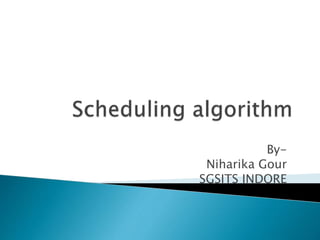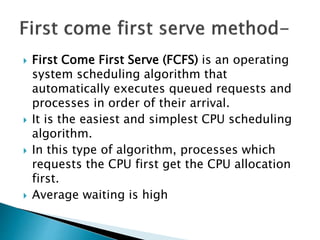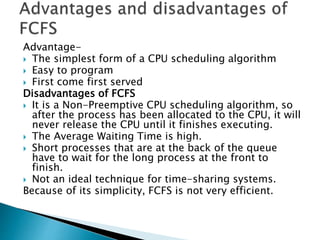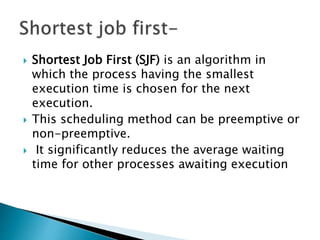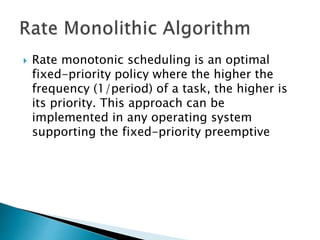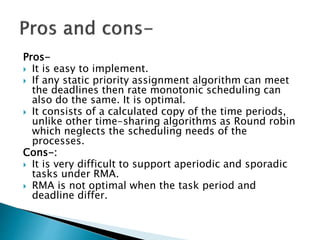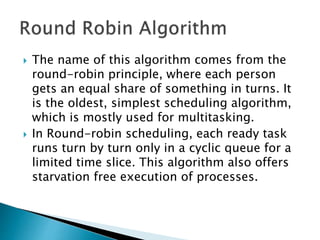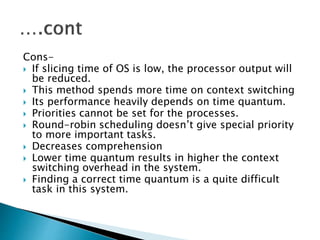The document outlines various CPU scheduling algorithms including First Come First Serve (FCFS), Shortest Job First (SJF), Earliest Deadline First (EDF), Rate Monotonic Scheduling (RMA), and Round Robin. Each algorithm is described with its advantages and disadvantages, highlighting their efficiency, optimal usage scenarios, and potential issues like starvation and overhead. The overall focus is on contrasting how these algorithms operate in different contexts, particularly regarding efficiency and response time in scheduling processes.
